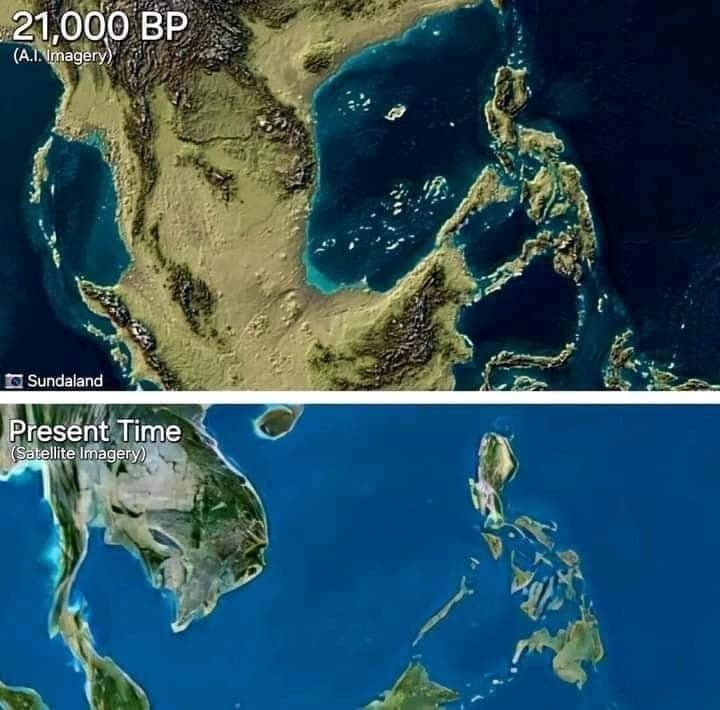
21,000 years ago at the peak of the last ice age, sea levels were significantly lower than they are today. Parts of the Philipines, such as Palawan, were connected by land to most of Southeast Asia, by the now submerged continent of Sundaland, which also provided a land bridge to Australia, and allowed animals and humans to traverse much of the region on foot, or very short trips across the water.
As the last ice age ended sea levels began to rise, and populations became isolated from each other across the vast chain of islands that were formed from the higher elevated areas within, and around what was once Sundaland. There is even some research around Mayan history, which point to Sundaland as a potential origin of the Mayans, and other MesoAmerican peoples. According to the Mayans, they came from a continent that sunk in the Pacific:
Charles Étienne Brasseur was also a famous writer, ethnographer and archaeologist specializing in the study of Mayan and Aztec civilizations.
According to the scholar, the Mayans remembered their homeland as a “continent located in the Pacific”, which later sunk. They called this continent “Land of Mu”.
Until a few years ago, this was thought to be a legend. But the advent of the satellites proved that it was all true. In fact, the current Indonesia and Australia are the ‘remnants’ of a much larger continent, which scientists call Sundaland. This continent located in the waters of the Pacific Ocean was partially submerged starting 14,000 years ago, when the Pacific Ocean rose about 140 meters.


